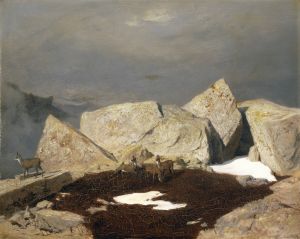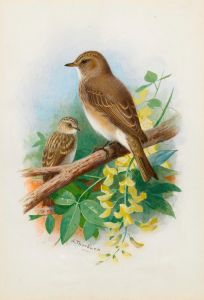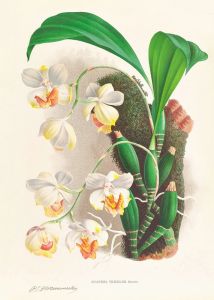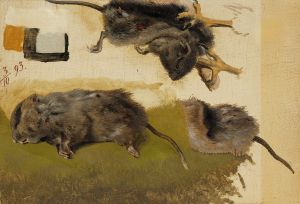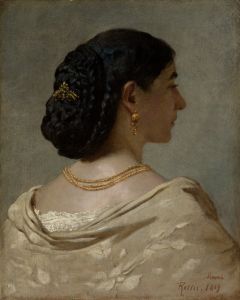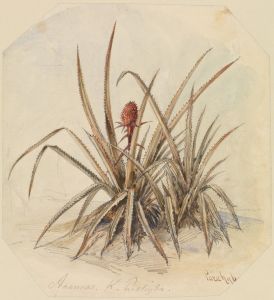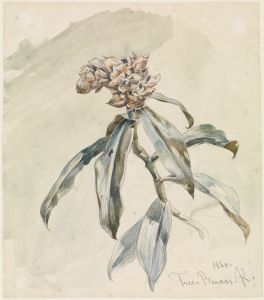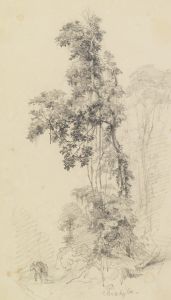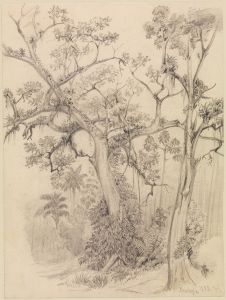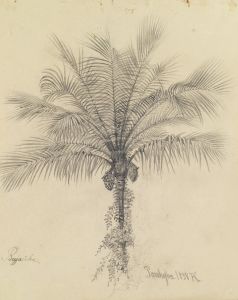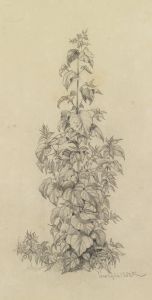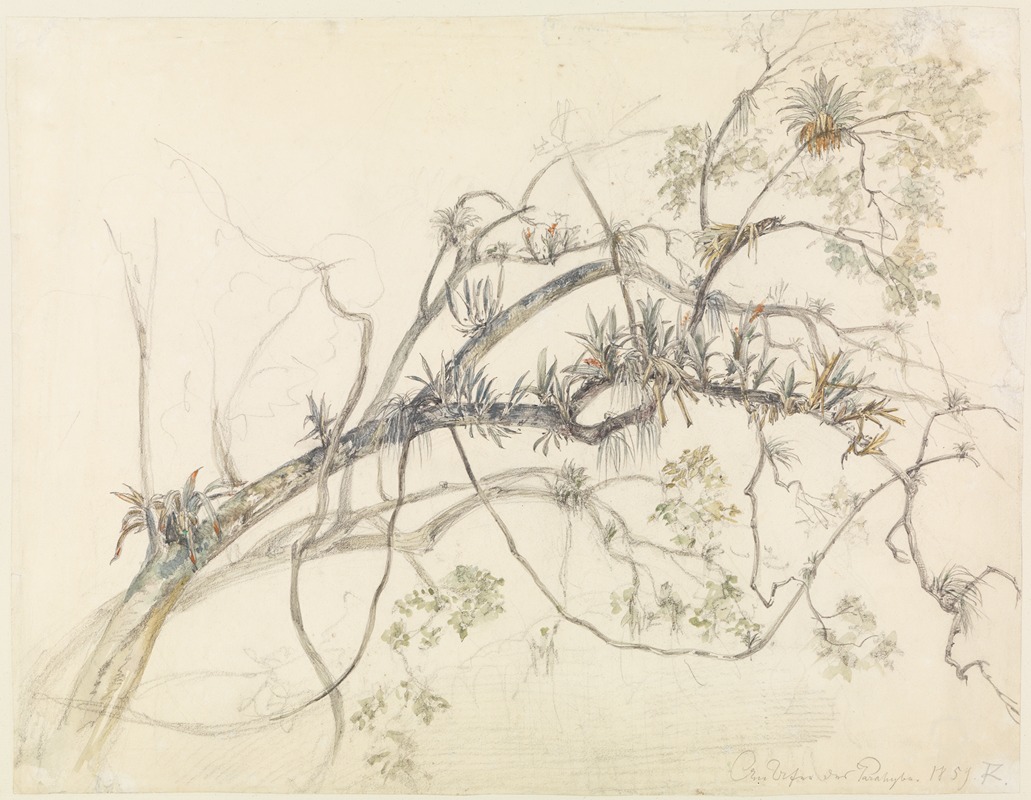
Aststudie mit Schlinggewächsen am Ufer des Parahyba
A hand-painted replica of Ferdinand Keller’s masterpiece Aststudie mit Schlinggewächsen am Ufer des Parahyba, meticulously crafted by professional artists to capture the true essence of the original. Each piece is created with museum-quality canvas and rare mineral pigments, carefully painted by experienced artists with delicate brushstrokes and rich, layered colors to perfectly recreate the texture of the original artwork. Unlike machine-printed reproductions, this hand-painted version brings the painting to life, infused with the artist’s emotions and skill in every stroke. Whether for personal collection or home decoration, it instantly elevates the artistic atmosphere of any space.
Ferdinand Keller was a notable Swiss painter born in 1842, known for his contributions to landscape and historical painting. One of his works, "Aststudie mit Schlinggewächsen am Ufer des Parahyba," translates to "Branch Study with Climbing Plants on the Bank of the Parahyba." This painting reflects Keller's interest in nature and his ability to capture the intricate details of the natural world.
Keller's artistic journey began in his early years, and he was heavily influenced by the Romantic movement, which emphasized the beauty and power of nature. His education included studies at the Academy of Fine Arts in Karlsruhe, where he honed his skills and developed a keen eye for detail. Keller's work often depicted lush landscapes, and he was known for his ability to render the subtleties of light and shadow.
"Aststudie mit Schlinggewächsen am Ufer des Parahyba" is a testament to Keller's fascination with the natural environment. The painting focuses on a specific scene along the banks of the Parahyba River, a significant waterway in Brazil. The Parahyba River, known for its diverse ecosystem, provides a rich backdrop for Keller's exploration of plant life. In this work, Keller meticulously illustrates the intertwining climbing plants, capturing their textures and forms with precision.
The painting is characterized by its attention to detail and the realistic portrayal of the flora. Keller's use of color and light enhances the three-dimensionality of the scene, drawing viewers into the lush environment he depicts. The composition is carefully balanced, with the twisting branches and vines creating a dynamic interplay that guides the viewer's eye across the canvas.
Keller's work often reflects a deep appreciation for the natural world, and "Aststudie mit Schlinggewächsen am Ufer des Parahyba" is no exception. The painting not only showcases his technical skill but also his ability to convey the beauty and complexity of nature. Through his art, Keller invites viewers to observe and appreciate the intricate details of the environment, encouraging a deeper connection with the natural world.
Throughout his career, Ferdinand Keller remained committed to exploring themes of nature and history. His works are celebrated for their artistic merit and their ability to capture the essence of the subjects he portrayed. "Aststudie mit Schlinggewächsen am Ufer des Parahyba" is a fine example of Keller's dedication to his craft and his passion for depicting the natural landscape.
Keller's legacy as an artist is marked by his contributions to the field of landscape painting. His works continue to be studied and admired for their technical excellence and their ability to evoke a sense of wonder and appreciation for the natural world. "Aststudie mit Schlinggewächsen am Ufer des Parahyba" remains a significant piece within his oeuvre, highlighting his skill in capturing the beauty of nature with both accuracy and artistry.





